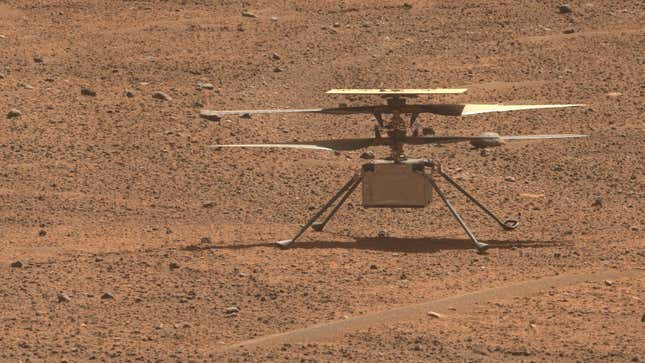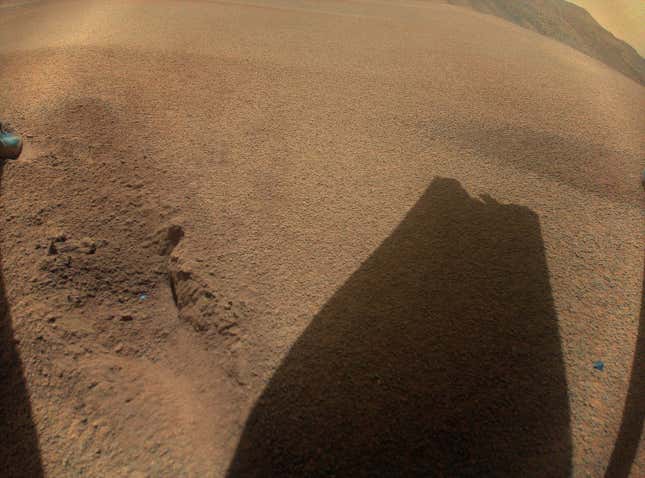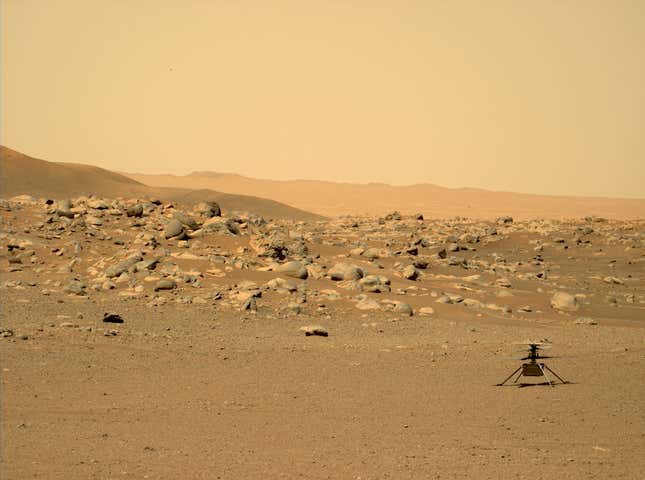
After nearly 3 years on the surface of Mars, NASA’s Ingenuity helicopter is dead. NASA is investigating the cause of the helicopter’s death, but the agency says that the Ingenuity clipped one of its wings, so to speak, having struck one of its rotor blades on the ground, which means the Mars helicopter can no longer fly.
The Ingenuity may now be operationally dead, but the helicopter shattered its initial expectations. It was originally meant to be a tech demonstration device, and was slated for five flight missions over a 30-day period on the Red Planet. But the Ingenuity far exceeded its planned lifespan, completing a whopping 72 flight missions in just under three years. I’ll let NASA Administrator Bill Nelson rightfully sing its praises:
Among Ingenuity’s achievements, some of the standouts include being the first helicopter on another planet, as well as flying in the Martian atmosphere, which has an atmospheric volume that is less than one percent of the Earth’s. Ingenuity logged nearly 129 flight minutes and covered 10.5 miles during those missions, according to NASA. It reached a max altitude of 78.7 feet.

That doesn’t sound like much but, then again, Ingenuity was only designed to fly missions at up to 15 feet. The helicopter is also small, having a height of 19 inches, blade span of four feet and weighing in at four pounds. It had to be tiny in order to be part of Perseverance’s payload, deploying from its belly when the rover landed on Mars. Ingenuity acted as an aerial scout, looking ahead for hazards in the rover’s path and beaming that information back to NASA.
But one of the autonomous helicopter’s flights ended with the scene of a broken rotor blade. The broken tip of the carbon fiber blade is visible in the shadow, which didn’t bode well for the little helicopter. Indeed, RIP, Ingenuity.

As Bill Nelson said, it’s a bittersweet send off. On the one hand, the little ’copter is dead. A flightless bird on the barren surface of Mars. It’s a tragedy almost fit for one of Ray Bradbury’s Martian Chronicles. On the other hand, however, Ingenuity accomplished much more than NASA hoped to achieve. Nelson put it best as he concluded NASA’s announcement: “And, so, thank you, Ingenuity.”

https://ift.tt/GazFHbu
Science
No comments:
Post a Comment